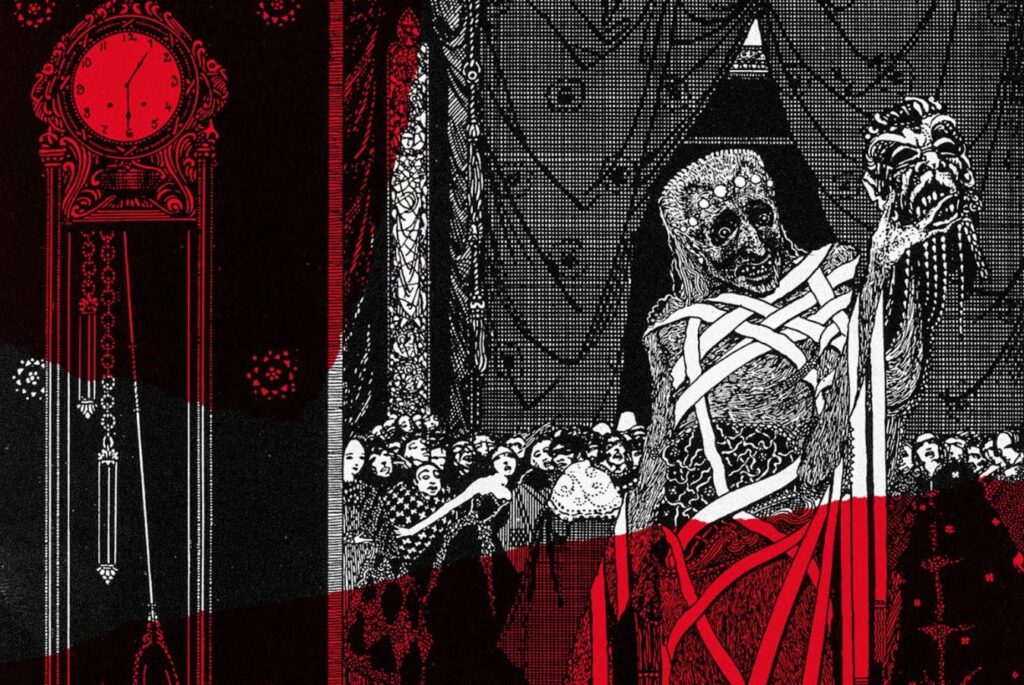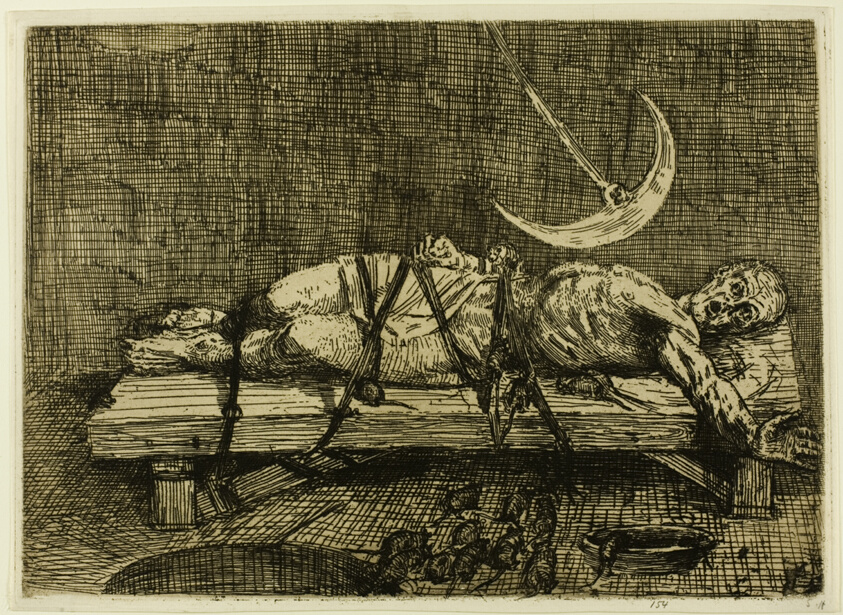Let us explore the best works of Edgar Allan Poe that will help you get started with his oeuvre of literature.
Edgar Allan Poe was one of the finest literary figures from America, whose influence has been as far-reaching as it is long-lasting. Poe was a master of mystery and intrigue, specializing in tales revolving around death and horror and generally dealing with the darker shades of life. He was one of the first short story writers from America and is popularly considered the inventor of the detective fiction genre, his works having been adapted for countless plays and films.
His stories have left us with innumerable singular images, from beating undead hearts and masked figures of death to descending pendulum blades and people buried alive – his tales are often impossible to forget once you’ve lived through them. In this article, we look at four short stories that you should bookmark right away in case you wish to delve into the macabre world of Edgar Allan Poe.
Major Works of Edgar Allan Poe
Poe was best known for his poetry and short stories, but he also published seminal pieces on literary theory and criticism. Some of his best-known poems, like ‘The Raven’, mirror his preoccupation with occult and supernatural elements, while ‘Eldorado’ reflects his passion for tales of adventure, especially ones where the characters are trying to overcome death. Poetry helped kickstart Poe’s career before he moved to writing short stories, which have become timeless classics.
His detective protagonist, C. Auguste Dupin, paved the way for Sherlock Holmes and Hercule Poirot in the future, with Sir Arthur Conan Doyle famously remarking, “Where was the detective story until Poe breathed the breath of life into it?”.
Many of Poe’s stories also featured cryptographic puzzles and riddles, notably in short stories like ‘The Gold Bug’, which influenced America’s best-known cryptologist William Friedman. But the best of Poe’s short stories tended to almost invariably deal with elements of Gothic horror, featuring suspenseful tales that regularly push the boundaries of the reader’s imagination. Following are four of his major works to help you get a better idea about his works:
1. The Masque of Red Death

The first story in our list allegorizes the plague and human beings’ hubris in thinking they can cheat death. Prince Prospero hosts a masquerade ball (essentially a costume party) in his walled abbey, where he and his noble guests have sheltered against a plague sweeping over their lands that Poe calls ‘The Red Death’. We learn that anyone afflicted by it dies within half an hour after suffering from gruesome symptoms such as pain, dizziness and bleeding. There are seven differently coloured rooms at the ball, but very few dare to enter the last room, decorated black and lit red. The room also has a large ebony clock that chimes to announce each hour, making the merrymakers pause for a few moments before they resume their fun. As the clock strikes midnight, the guests suddenly notice a strange figure, “tall and gaunt, and shrouded from head to foot in the habiliments of the grave”, as if someone decided to dress like The Red Death itself. Prospero takes this as an affront to him and pursues the guest with a dagger through all six rooms, aiming to disclose their identity, a decision that he would go on to regret.
The ‘Masque of Red Death’ serves as a great display of Poe’s ability to build up dread and is sure to remind contemporary readers of the COVID-19 pandemic and the feeling of death stalking us at every turn that Poe evokes. It also allegorizes the theme of the rich and powerful being arrogant enough to think that they can outsmart disease and death and care only to lock themselves away even as the rest of the populace suffers. That the ball hosted by Prospero is a ‘masquerade’ is also significant and again comments on the tendency of the nobility and the bourgeoisie to disavow reality in favour of superficiality – a privilege that the proletariat does not have – which comes back to bite them because it’s this very theme of a masquerade that allows the Red Death to slip through the ranks, unseen and unrecognised, before it’s too late.
2. The Pit and the Pendulum

First published in 1842, ‘The Pit and the Pendulum’ is a story about a man who’s taken prisoner by the Spanish Inquisition and sentenced to a gruesome death. It is told from this prisoner’s point of view, which finds him waking up in a cell covered in complete darkness. He tries measuring the size of his cell through various means, and during one such attempt, he trips and falls at the edge of a gnawing pit in the middle of the room. Presumably, his captors intended that he fall into it, being unable to see in the dark, yet his fall saves him from death. The prisoner falls unconscious and later wakes up to find himself tied to a wooden block facing the ceiling. His cell is glowing with a faint light, and he finds a pendulum hanging from the ceiling, its edge carrying a foot-long blade, swinging back and forth as it slowly descends.
‘The Pit and the Pendulum’ marks a departure from most of Poe’s oeuvre in its realist focus, doing away with supernatural elements to hone in on sensory information. With the prisoner trapped in a dark cell, the sense of sound is heightened and adds to the intrigue as the readers gradually discover the various traps. Being mostly set in a single location and with a single character, Poe spends much time carefully building the atmosphere of terror and confinement. Death seems inevitable for the prisoner, except for one possibility: he can try attracting the rats in his cell by covering himself with the leftover meat served to him, hoping the rodents chew through his straps before the blade fully descends. Can he escape?
3. Metzengerstein

Not as widely known as his other works, ‘Metzengerstein: A Tale in Imitation of the German’ was Poe’s first printed short story. It’s a distinctly Gothic tale, following an 18-year-old baron, Frederick Metzengerstein, the last of his family. The Metzengersteins, a wealthy family in Hungary, have a long-standing feud with their rivals, the Berliftzings. There’s an ancient prophecy that tells of this feud’s origin and perhaps also foreshadows its end: “A lofty name shall have a fearful fall when, as the rider over his horse, the mortality of Metzengerstein shall triumph over the immortality of Berlifitzing.” Frederick earns a reputation for his cruelty and erratic ways, stemming from inheriting great power and wealth at such a young age. Shortly following his inheritance, a great fire burns down the stables of the Berliftzings, and Frederick is suspected to be responsible. Soon after, Frederick’s men find a new horse that seems to have appeared from nowhere. Its forehead is branded with the initials “W.V.B”, which the men suspect stands for “William Von Berlifitzing”, even though no one at the Berliftzing stables recognizes it.
Frederick becomes very close to the horse, riding it everywhere and losing interest in more worldly matters. Very soon, there’s another big fire, this time in Frederick’s castle, while he is away with his horse. The pair soon return, and what follows evokes the prophecy lying at the origins of the family feud. One suspects that the horse might be a reincarnation of Wilhelm Berliftzing, who died in the previous fire trying to save his horses, especially with reference to the transmigration of souls towards the beginning of the story. It’s an allegorical tale; its Gothic elements anticipate Poe’s later (and more famous) works such as ‘The Fall of The House of Usher’. The story tells of what can happen when the evil that humans themselves give rise to comes back to haunt them in the end.
4. The Tell-Tale Heart

One of Poe’s most famous short stories, ‘The Tell-Tale Heart’, tells the story of a murder and its subsequent discovery. The narrator lives with an old man whose single most distinctive feature is a “vulture-like” eye that distresses the narrator so much that he’s moved to kill him.” The narrator confesses that he suffers from an “over-acuteness of the senses”, causing him to be nervous and jittery. Even though the old man has never harmed the narrator in any manner, and the narrator claims to love him, it’s his eye that seems to trigger something pathological within him. After meticulously waiting outside the old man’s door for seven nights to find the perfect opportunity, on the eighth night, the narrator makes an accidental slip that forces his hand, and he commits the murder. To hide his crime, the narrator cuts up his victim’s body and hides the pieces under the floorboards, removing all traces of the crime. However, the old man’s dying scream alerts a neighbour, who summons the police.
In front of the police, the narrator seems confident initially, assured that his thoroughness would protect him. Likewise, the police do not suspect a thing, but the narrator himself begins to hear a ringing in his ears that doesn’t seem audible to anyone else except him. Soon, the narrator suspects that it’s the sound of the old man’s heartbeat coming from under the floorboards – Clearly an absurd thought, given the man is dead. His confident façade crumbles and his guilt inadvertently gets revealed. The story, told in first person, features an unreliable narrator trying to convince the reader that he isn’t insane. After all, if he wasn’t sane, how could he have so meticulously planned and executed the murder? Poe brilliantly stitches a tale where the heights of the rational seem to eerily coincide with the irrational. It is a story about a man who is, in the end, consumed by the demons in his head.
Why You Should Read Edgar Allan Poe
Poe is popularly considered a master of the short-story format, producing several taut and often thrilling tales that gnaw at you long after you’ve finished reading them. Fans of the grotesque and the macabre will find themselves easily at home in Poe’s stories and coming back to them regularly. In addition to horror, Poe’s stories also feature elements of science-fiction, satire, detective fiction, etc. Poe was not just a short story writer but a poet and a literary critic, and his literary theories are often reflected in his tales. Those fond of stories in which the meaning isn’t immediately obvious but conveyed through symbolism and parallels drawn between disparate story elements will love Poe’s style; he disliked being didactic. Ultimately, anyone reading Edgar Allan Poe would get to enjoy a wide range of stories dealing with the usually-repressed sides of normal psychical and social life, as well as the realm of the fantastical through recurring themes such as the reanimation of the dead, premature burial, fears relating to abandonment and loss of identity etc.

